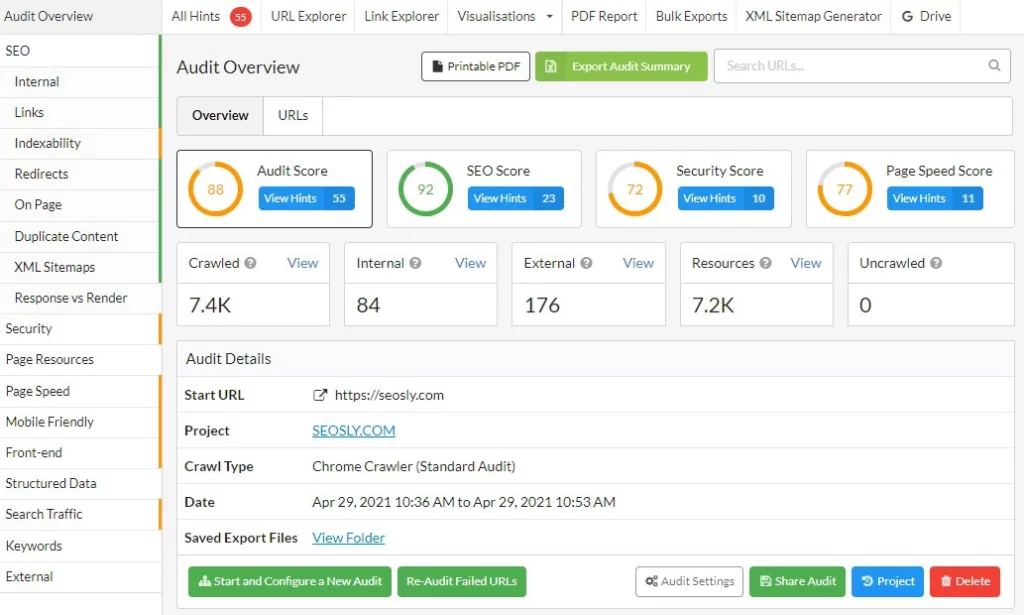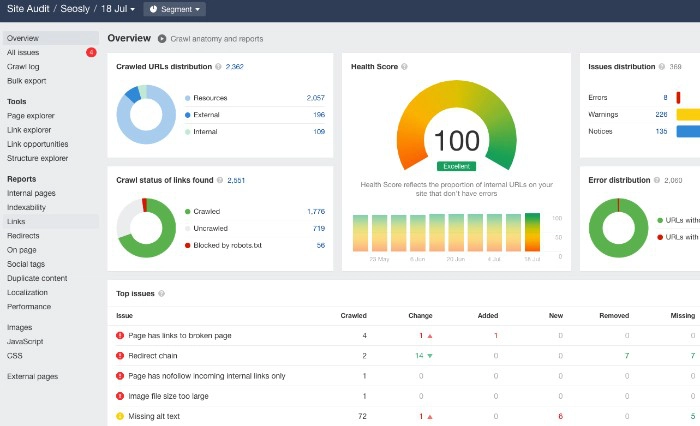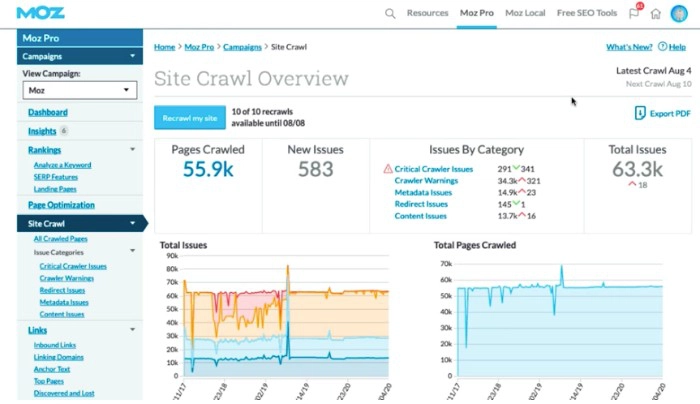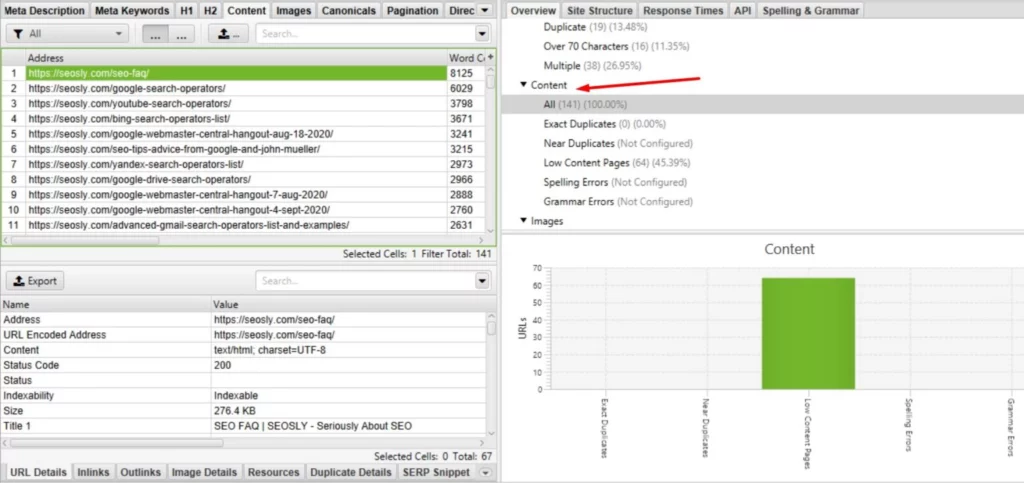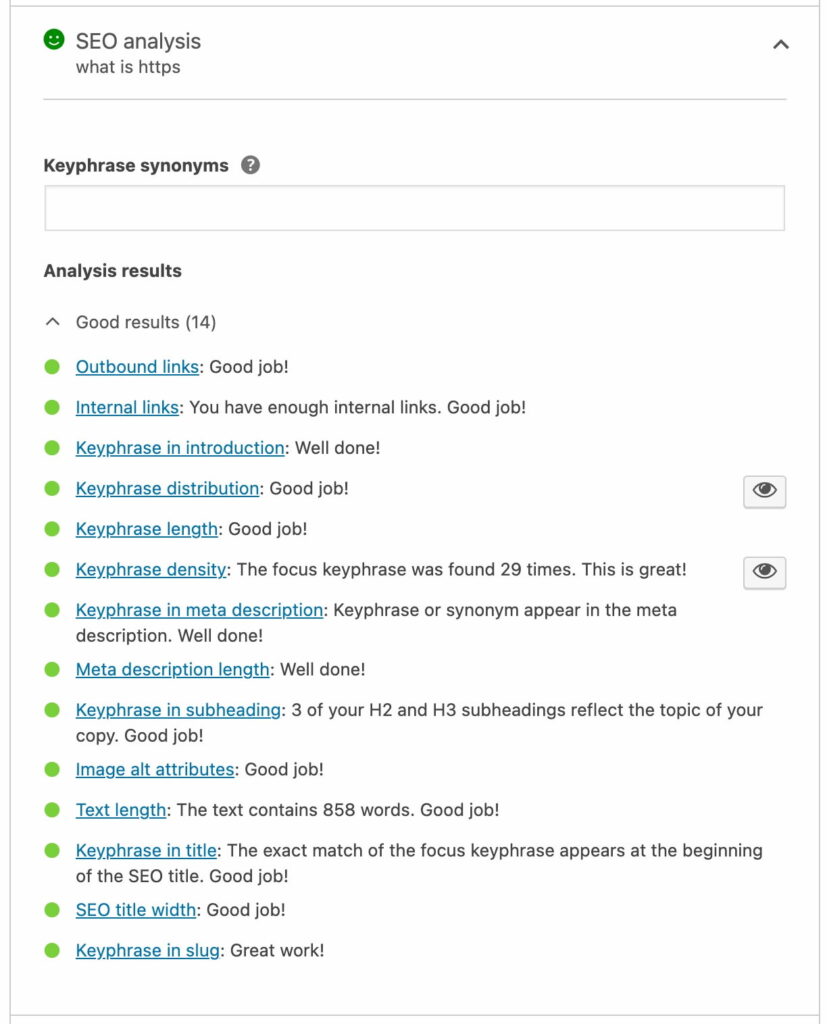Before jumping into SEO Audit let’s discuss what is SEO. SEO is the process of making any website search engine friendly. It helps a website to perform better and get a good position in search engines. Every website needs maintenance or Audit regularly to avoid penalties from search engines which can affect our website’s performance.
So Now let’s discuss what is SEO Audit?
An SEO audit is a process of evaluating how well your Website is optimised for search engines. It is necessary because it helps you find the issues regarding the site’s SEO which impact its performance in search engines.
For example, if you having a website and you are finding difficulties in ranking factor then you should consider a proper SEO audit to fix that factor.
For Auditing a website we need to go through the 3 areas of SEO, Which are those areas and which tools can help us in auditing a website I can let you know with further information in my article.
Areas Cover In SEO Audit:
suppose you having a large website to audit and you don’t know from where to start?
In that case don’t worry, Let me help you by giving clarifications on 3 major areas of SEO audit which will help you to optimise your website and the areas are:
- 1- Technical SEO Audit
- 2- On Page SEO Audit
- 3- Off Page SEO Audit
1- Technical SEO Audit:
A technical SEO audit involves evaluating various technical aspects of a website to identify issues that may be affecting its search engine visibility and overall performance. Here are some steps to perform a technical SEO audit:
i- Check for indexing issues:
Verify that all pages on the website are indexed by search engines by performing a site on Google. If any pages are not indexed, you may need to investigate why and fix the issue.
ii- Check for crawl errors:
Use Google Search Console or other tools to identify any crawl errors or broken links that could be impacting your website’s crawlability.
iii- Review website structure:
Ensure that your website’s structure is optimized for users and search engines. Check for proper use of header tags, canonical tags, and other structural elements.
iv- Check for User Experience:
Use tools such as Google PageSpeed Insights or GTmetrix to check your website’s load times and identify areas for improvement.
v- Check for mobile responsiveness:
With a majority of web traffic coming from mobile devices, it’s important to ensure that your website is mobile-friendly and responsive.
vi- Review metadata:
Inspect that your website’s metadata, including title tags, meta descriptions, and header tags, are properly optimized for search engines and users.
vii- Check for duplicate content:
Use tools like Siteliner to identify any duplicate content issues that could be impacting your website’s search engine visibility.
viii- Check for sitemap and robots.txt issues:
Assure that your website has a valid sitemap and robots.txt file and that they are properly placed.
2- On Page SEO Audit:
An on-page SEO audit is an evaluation of website pages to identify areas of improvement for search engine optimization. The audit typically includes analyzing factors such as the quality of content, keyword usage, page structure and organization, meta tags, images, internal linking, and other on-page elements that can affect a site’s search engine rankings.
Some common on-page SEO audit practices include:
i- Check for Keyword Research:
Conducting keyword research to identify relevant search terms and incorporating them into your content and meta tags
ii- Check for Internal Linkings:
Ensuring your website has a clear and organized structure with easy-to-use navigation and internal linking
iii- Check for Page Titles and Meta Description:
Optimizing your page titles and meta descriptions to include relevant keywords and compelling copy that encourages click-throughs
iv- Check for the Quality Content:
Writing high-quality, original content that provides value to your audience and is optimized for search engines
v- Check for Mobile responsiveness:
Optimizing your website for mobile devices and ensuring it loads quickly.
vi- Check for Featured Image and Quality Images:
If your image quality is not good and if you have not given proper dimensions then it may affect the rank of your website and it is also necessary to keep a good featured image so that audience can identify your topic.
vii- Check for Alt Text In Images:
It is necessary to provide alt text in all the images so that google bots can identify the image and helps to rank in search engine.
3- Off Page SEO Audit:
An off-page audit is an evaluation of all the factors presence outside of its own domain. The purpose for practicing off SEO audit is to evaluate the website’s visibility and authority on the web, as well as enhancing the performance of the website.
Some of the key elements that an off-page audit may cover include:
i- Backlink analysis:
This involves reviewing the quality and quantity of external links pointing to the website, as well as identifying any toxic or spammy links that could harm the site’s ranking.
ii- Social media analysis:
This involves evaluating the website’s social media presence, engagement levels, and overall impact on various social media platforms.
iii- Brand mentions analysis:
This involves tracking and evaluating the frequency and quality of online mentions of the website’s brand, products, or services, and assessing their impact on the website’s visibility and reputation.
iv- Competitor analysis:
This involves benchmarking the website’s online performance against that of its competitors, including their backlink profiles, social media activity, and online reputation.
Tools Used For SEO Audit:
i- Google Analytics:
This is a free tool from Google that can help you track website traffic and identify issues related to website performance and user behaviour.
ii- Google Search Console:
This tool can help you monitor your website’s search performance, identify crawl errors, and submit sitemaps.
iii- SEMrush:
This is a paid tool that can help you perform a comprehensive SEO audit, including keyword analysis, backlink analysis, and competitor analysis.
iv- Ahrefs:
This is another paid tool that can help you perform a thorough SEO audit, including identifying broken links, finding technical SEO issues, and analyzing your backlink profile.
v- Moz Pro:
This is a suite of SEO tools that can help you perform keyword research, track rankings, and identify technical issues on your website.
vi- Screaming Frog:
This is a desktop-based tool that can help you crawl your website and identify technical issues, such as broken links and duplicate content.
vii- Yoast SEO:
This is a popular WordPress plugin that can help you optimize your content for search engines by analyzing on-page elements and providing suggestions for improvement.
My suggestion:
If you consider my suggestion then it is very important to go for a SEO audit once in a week because it helps you to find why your website is not performing well in search engines and after you found the reasons just fix it step by step and make your website SEO friendly to get good results.
Final Thoughts:
SEO audit of a website is a key to get better results for your business or company. If you overlook the problems regarding a website then it may affect to it’s performance and to your business also. Following a weekly auditing routine of your website can help you to find the opportunities to rank and can also help you to boost your business.





